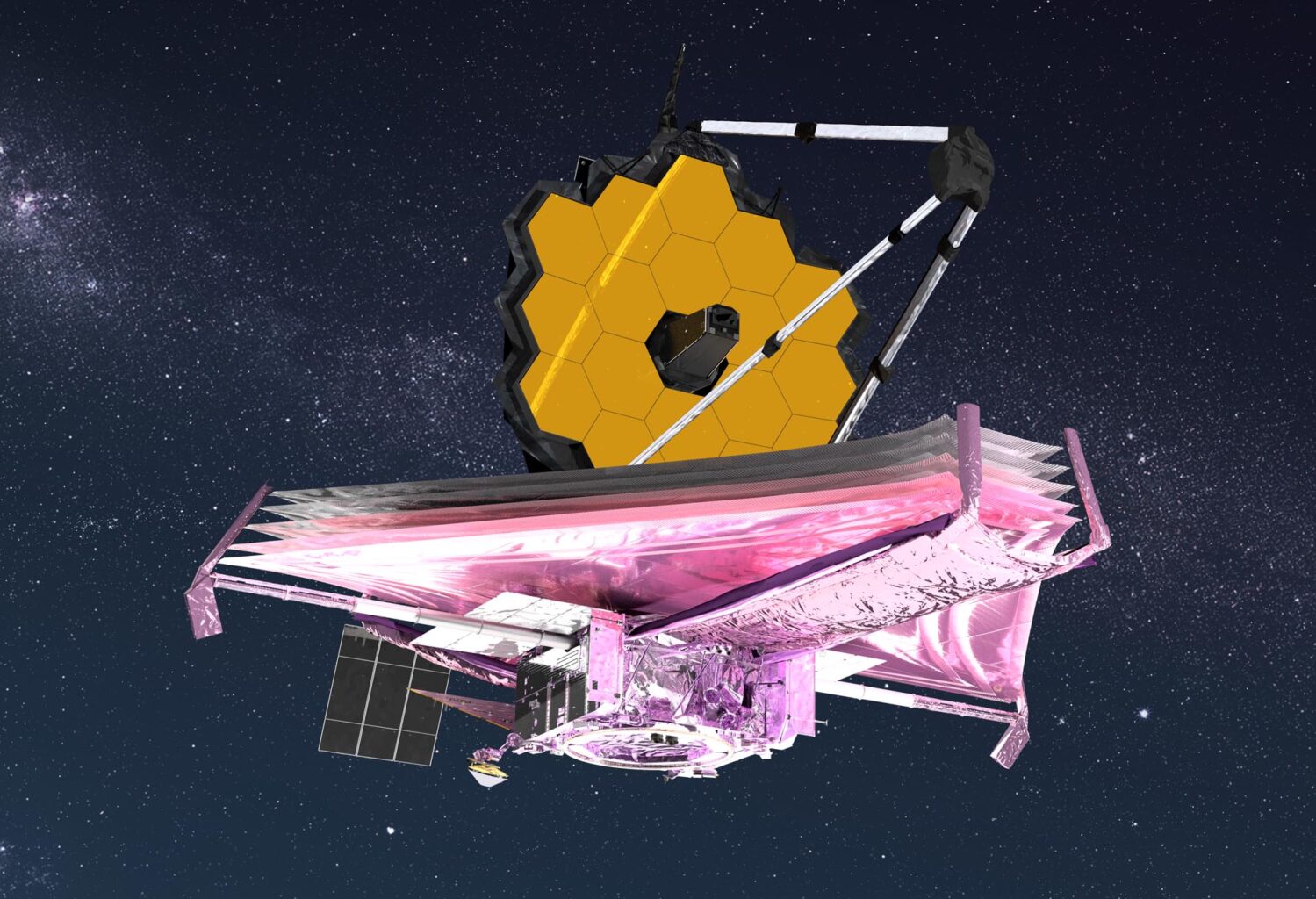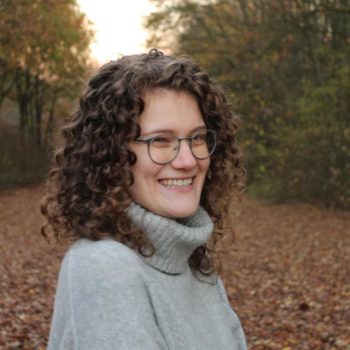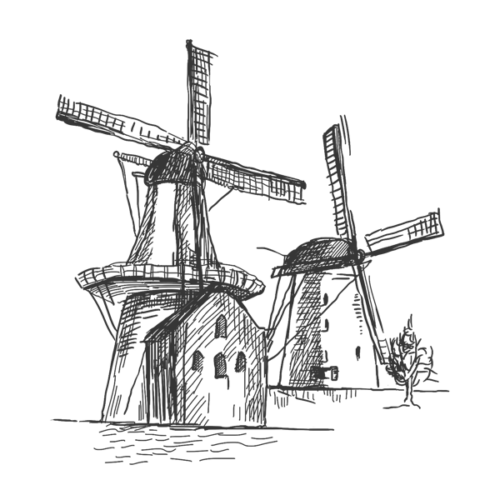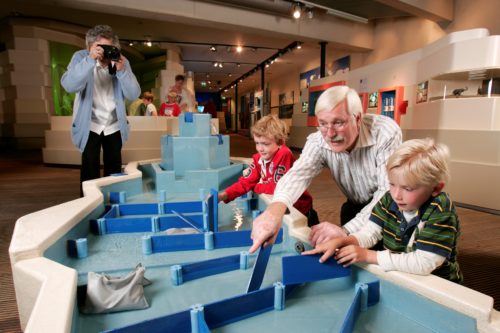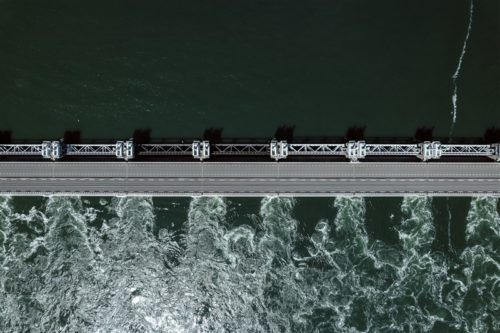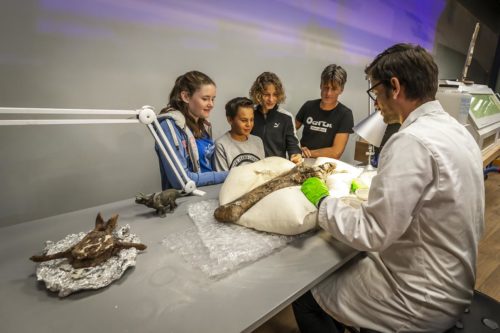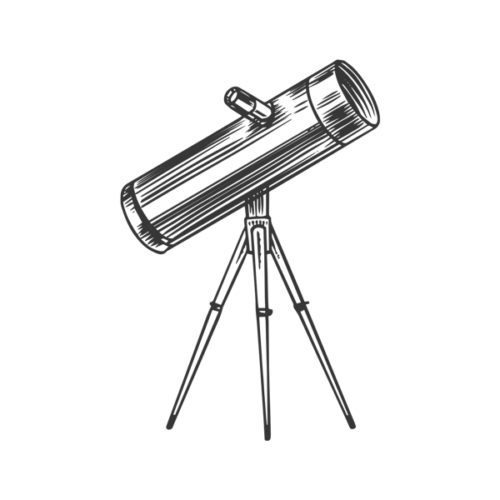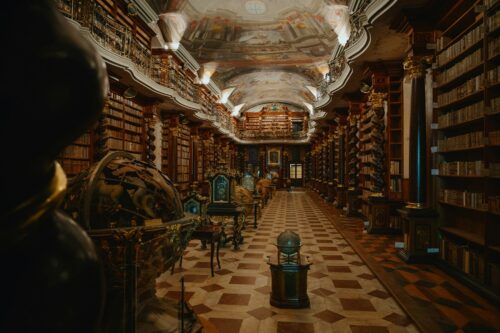Building a new lookout to the universe – what could go wrong? It turns out, a lot. But after nerve-wrecking months the James Webb telescope is up and running. Two Dutch astrophysicists involved in this endeavour tell us about their emotions and ambitious plans.
Photo: Alone out there, that is how an artist depicts the James Webb telescope. Credit: NASA/GSFCCIL/Adriana Manrique Gutierrez
With space missions, a lot can go wrong. Parts don’t separate as they’re supposed to, fuel misfires and complete launches fail. The people working in space sciences are very well aware of that. They know enough examples of such failures. It takes endurance and sometimes blind faith to work on missions for years and just hope everyone has done their part, everything was calculated correctly and chance doesn’t decide to get in the way.
The same was true for the people working on the James Webb Space Telescope. It was launched on December 25th, 2021 after almost three decades of planning. Webb, as many scientists involved call it, is the biggest, most capable telescope in space to date. From the idea, born in the late 1980s, to a functional telescope orbiting the sun a lot happened and thousands of scientists hoped everything would work out. “It was fantastic to see the launch go well, but we knew there were more than 300 items on which it could go wrong”, says Ewine van Dishoeck. She is a professor of Molecular Astrophysics at Leiden University in the Netherlands.
When science-guide.eu met her in 2022, she was very busy. The first pictures and data from the telescope had just been released and she had all right to be excited about them. “I’ve been involved with Webb for more than 25 years”, van Dishoek tells us, “mostly as a co-principal investigator on one of the four instruments on Webb.” 25 years, that’s roughly half the time since van Dishoeck started studying chemistry and mathematics in the early 1970s. During that time, several generations of new researchers came into the project.
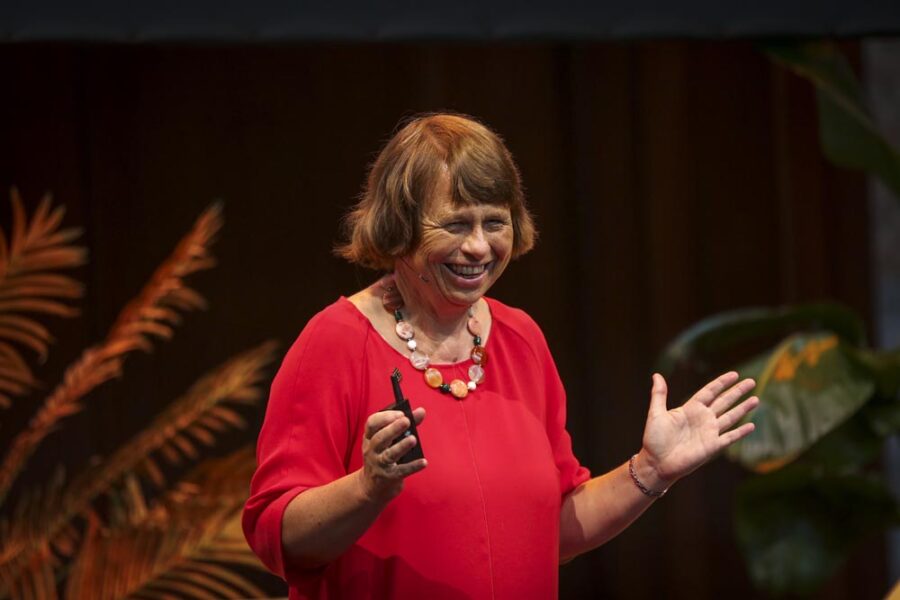
“It was fantastic to see the launch go well, but we knew there were more than 300 items on which it could go wrong.”
Ewine van Dishoeck, astrophysicist
The James Webb telescope tackles a problem that previous telescopes which were sent to space, for example the Hubble telescope, could not solve. Those instruments almost exclusively looked at visible light. And visible light stops at clouds. You know this tricky phenomenon for astronomers if you’ve ever tried to see stars on a cloudy night.
A deep, undisturbed look at space
There are also clouds in space. Young stars for example usually form in extremely huge plumes of dust deep in space. But Webb can look through those clouds because its four instruments detect infrared light instead of visible light. Infrared light is longer in wavelength than visible light and just slips past the dust particles, leaving behind a clear view of for example the young stars and the disks forming around them that will eventually become planets. One of those infrared light detectors, the mid-infrared instrument, or MIRI, was co-developed by Ewine van Dishoeck and an international team of researchers.
For a better view, the telescope was positioned at a distance from Earth, about one and a half million kilometers away, far beyond the moon. The telescope is not orbiting the Earth like Hubble but is instead orbiting the sun in sync with us. This way Webb can stay in the Earth’s shadow, giving it an even better view which is less disturbed by solar radiation.
The European Space Agency (ESA) worked on the telescope in collaboration with the American Space Agency NASA. ESA provided the rocket as well as the spaceport for it to be launched on. In exchange, European researchers get to decide what Webb is pointing at for about 15 percent of the time.
Super-cool instruments
In the months between the launch and Webb’s arrival at its final destination tension was high for researchers like Ewine van Dishoeck. Not only did the telescope have to get to its predestined position, it also needed to work there. “Our instrument needs to be cold, very cold. Just a passive cooling is not enough, it needs an active cooling system. That was turned on in early April and I was so afraid that something had gone wrong during the launch”, the astrophysicist explains. She feared “that a little connector had broken off or something like that.” She constantly looked on the website “Where is Webb?” that reports current data from the telescope. Finally everything worked as van Dishoeck and her colleagues had planned. “You could see the temperature go down and once it hit just a few degrees above absolute zero, then I knew we had a working telescope.”
Webb’s position in the Earth’s shadow and the active cooling system are not enough to cool it down to the extreme low temperatures needed. That is why the telescope has a giant foldable sunshield the size of a tennis court that blocks the instrument further from the light and heat. It uses gaps in between multiple layers of sunshield to take advantage of the cooling effect of the vacuum in space. Everything else is also adapted to keep the instruments running as cold as possible. That design allows for temperatures down to seven Kelvin, or -266.15 degree Celsius, an extreme cold where most almost all materials are frozen and no movement hinders exact measurements.
Once Webb was in its orbit and sufficiently cold, the telescope could finally start collecting data that Ewine van Dishoeck and her team can now work with. They were racing to “get a feeling of the data, how to work with them. We haven’t been able to do that yet and then want to look as quickly as possible at what is actually in the data.”
Sharp images offer a view into the origins of stars
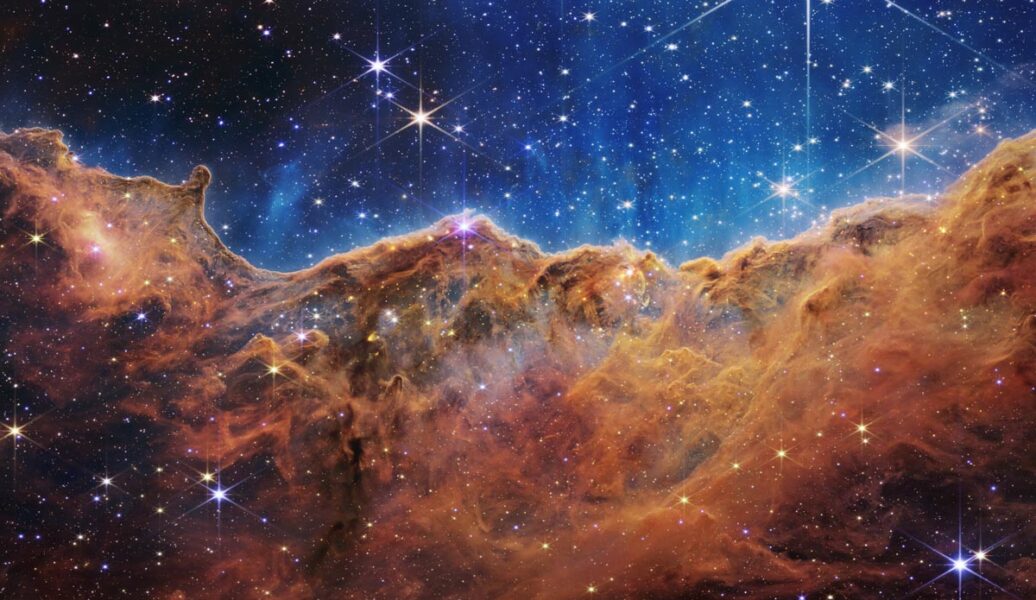
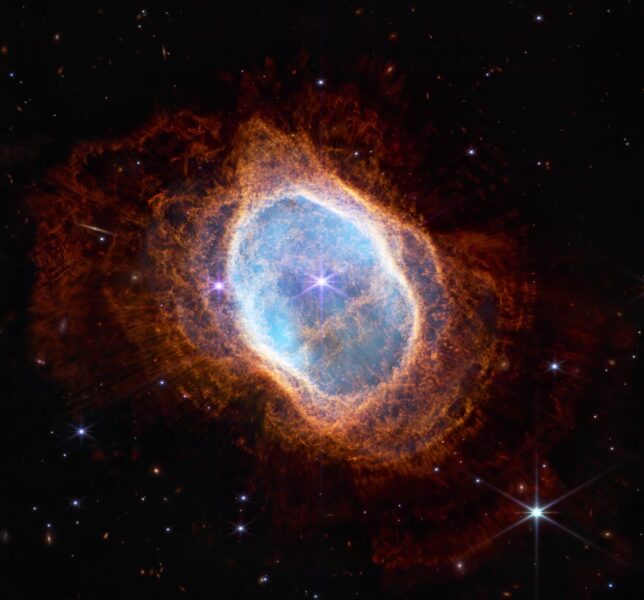
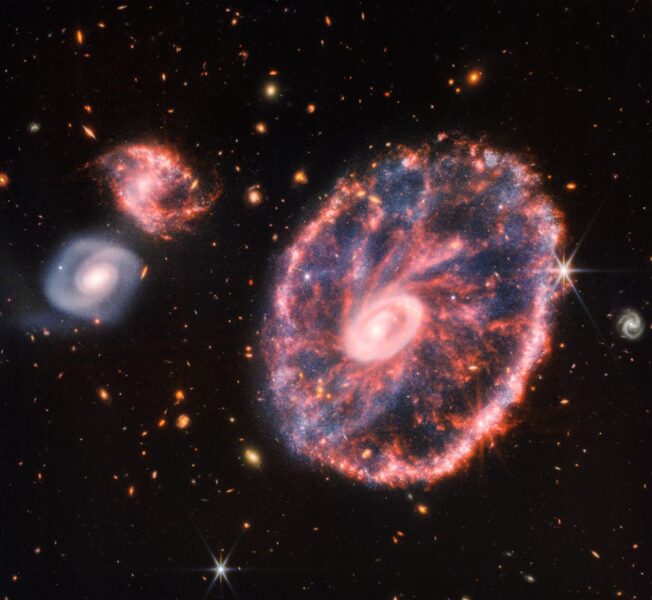
The telescope can scan approximately half of the sky at once. It has a huge gold plated mirror made up of 16 smaller hexagonal mirrors all facing in one direction. Unfolded they look like a huge honeycomb. The mirrors were too big to fit inside of a rocket, which is about 6 meters in diameter, so engineers had to fold the whole thing up for space transport. Beneath the mirror are the four instruments looking at different wavelengths and reflections. Webb is going to look at all kinds of stuff: the early universe, galaxy evolution, the lifecycle of stars and other worlds, or as van Dishoek put it: “anything old, cold and dusty.”
Martijn van Gelder, a doctoral student in Ewine van Dishoecks group, is one of the younger researchers working with the data that the new telescope sends back to Earth constantly. He is interested in the formation of new stars that can now be studied even better. Webb and the research around it inevitably leads to fundamental, almost philosophical human questions: How did it all start? Could there be someone else out there? “How did our solar system form? Of course we have the planets, we have the sun but we cannot look back in time in our own solar system. So we have to look at other stars, how they formed”, van Gelder says about his motivation. “And that’s what I’m personally really interested in: Where did we come from?”
Teaming up and waiting a lot
Looking into young stars is an example of where the team spirit of Webb becomes very apparent. Some scientists − not even directly involved with Webb − have spent years researching interstellar ices for example. These ices can be recreated in a lab and then researchers can analyse at the wavelengths absorbed by the compounds they know are in there. Now other researcher like Martijn van Gelder take those findings and apply them to the new data from the Webb telescope to tell which compounds are actually present in young stars by comparing the lab data to it. “The people working in the lab did a great job of supplying astronomers like us with the information that we need to do our science. So without the lab we could not do what we are doing right now. I use their results and adopt them on the results of Webb”, explains van Gelder.
But his personal story also gives a real example of how space missions can be complicated and can throw some researches out of their original career planning because they were supposed to get the data from the telescope already years ago. “I was actually hired in 2018 to work with the Webb data because then the launch at that time was supposed to be in 2018 but it got delayed due to technical problems and so that’s why I’m actually finishing my PhD now without any Webb data”, reports van Gelder. He refers to that episode as “kind of a funny story.” In the end he got the opportunity to stay in the Leiden research group for two more years as a postdoctoral researcher. And he finally can do the work with the data which he was hired for four years ago.
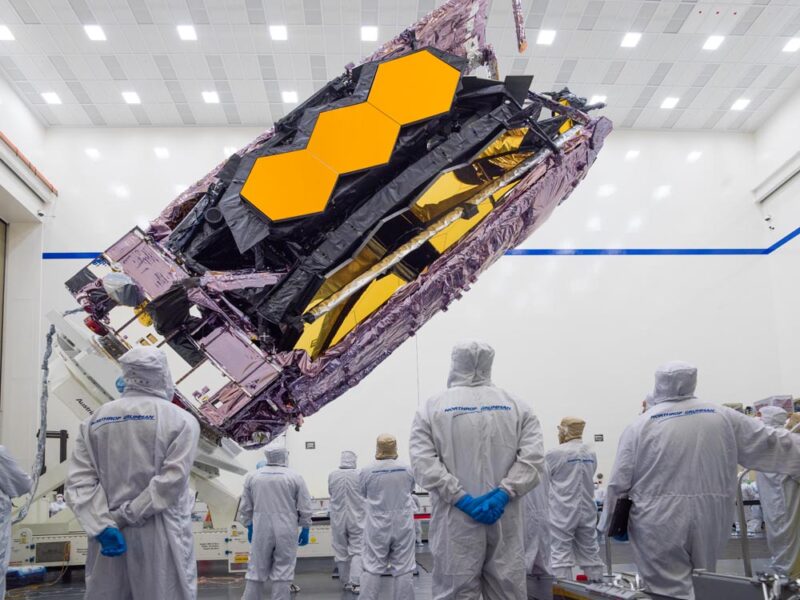
Group leader Ewine van Dishoek struggled with the mission sometimes as well: “All of these big projects go through various phases. There are times where you are very anxious. There are times when you think: Will this ever lead to something? What am I going to tell the press if it doesn’t work? That has gone through my head at least for ten years.”
But in the end she didn’t need to worry. The telescope got navigated to the right spot, everything unfolded the way it was supposed to, it cooled down completely and the mirrors were arranged in a way where they can reflect the exact right wave length of light. Some people criticize space exploration for its cost, the time it takes and simply don’t see the sense in looking that far out. It certainly was uncertain and draining at parts for everyone involved but Ewine van Dishoeck is sure: “It was all worth it in the end.”
